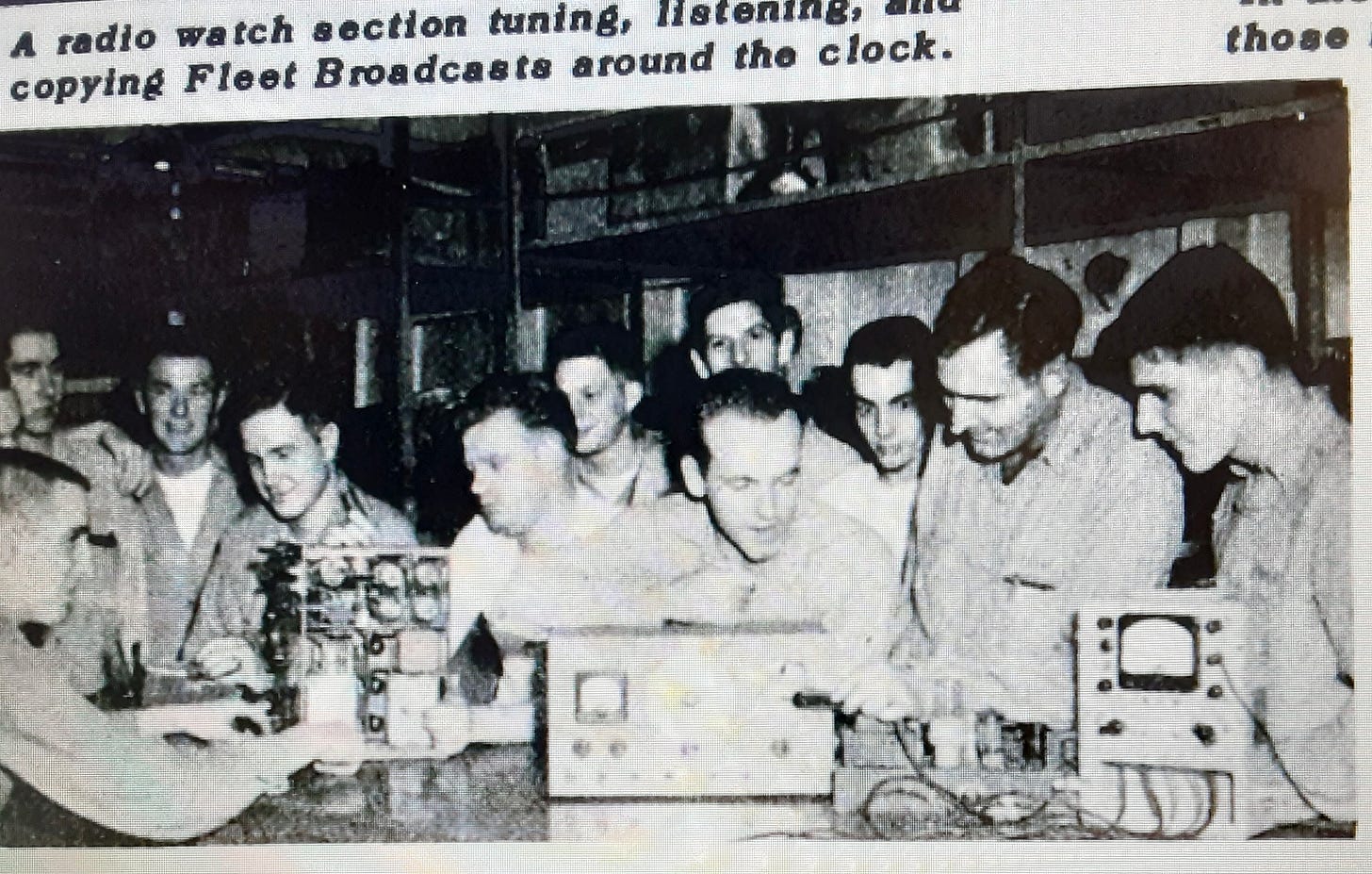Fishing off the Coast of Turkey
It was late in the summer of 1959, and I was in the US Navy serving aboard the USS Maury AGS-16. The ship, built in the 1940’s as an armed troop transport, was later converted to duty as a hydrographic survey vessel. Along with her sister ship, the USS Tanner AGS-15, she operated under contract with foreign countries to conduct surveys of coastal waterways. This particular six-month-long season for our ship was focused on a 600 mile long area of Turkey’s southern coastline, from a point west of Antalya to an area several miles east of Alanya. This area is considered the Turkish Riviera, or the Turquoise Coast. The survey grid covered an area from the shoreline out to distance of 150 miles. Eventually, the program’s objective was to complete a survey of the entire coastline, from Istanbul to Iskenderun near the border with Syria.
The actual data collected (depth measured by sonar at precise locations) over the entire grid was primarily gathered by the ship itself. A pair of sound boats (56 ft twin diesel vessels with a crew of 6 and fitted with sonar and navigation equipment) was assigned to cover close-to-shore, harbor, and island areas. The actual location of each vessel in real time was controlled by on-shore equipment, positioned either from beach (low frequency) or mountain sites (high frequency).
As an Electronics Technician, my month-long rotational assignments included duty aboard ship, on one of the sound boats, or one of the base stations. Each base station had a two-man crew, one an ET and one an engineman. The special navigation gear and radio were powered by one of two portable diesel generators and regularly supplied by the ship’s helicopter.

It was while I was doing a 30 day stint aboard one of the sound boats that we ended up in a small harbor for a weekend rest stop. We were anchored close to a small village. On the second morning of that stay over, I was on deck and saw a small rowboat leave the village and head out ways. In it were two young boys, one about 12 and one a few years older. The boys rowed up next our boat and with lots of hand waving and friendly expressions seemed to be inviting me to join them. In the rowboat was a net piled up between the seats, and I was able to figure out they were going fishing and asking me if I wanted to take part. I checked with our boat commander, got the ok, and climbed into the rowboat. The older boy directed me to sit in the bow. To this day I regret that I didn’t have a camera to take with me.
The older boy rowed while the younger one steered with a rudder, and we headed to the mouth of the harbor. Soon, we were in open water, a few dozen yards off shore, and heading west. Within perhaps a half mile from the harbor mouth, we turned toward an uninhabited area of the shoreline. Just before beaching, the boys turned the boat around 180 degrees and pointed it away from shore. As the older boy rowed, the younger one (his brother, most likely) began paying out the net. It was about 4 feet wide, with bits of flotation attached to one edge and small rocks or pieces of metal along the other. As it was placed in the water, it began floating upright. After some time, having rowed in a large semi-circle and returned to the beach, the half-mile long net was fully paid out.
At that point, the younger boy took over rowing and the older boy pulled out from under the seats a 6 foot long wooden pole, on the end of which was a round piece of wood with a cup-shaped bottom end. The boy stood on a wide seat at the stern and while singing a sort of chant and dancing in his bare feet, began plunging the pole over the transom into the water. Its shape created a sharp crashing sound (almost like a gunshot) as it hit the water, sending out underwater waves and small surface ripples. This went on for nearly an hour, covering a large portion of the area inside the net. Eventually, we returned to one end of the net.
As the older boy returned to rowing, the younger boy began retrieving the net and piling it behind him in the bottom of the boat. As the net reappeared over the transom, it was now well covered with small fish (they looked like small, white perch) whose gills were attached to the netting. The fish were quickly pulled from the net and tossed into the boat. By the time the entire net was recovered, there was a thick layer of fish covering the entire bottom of the boat.
Soon after, we headed back to the harbor and aimed for a good sized wooden pier next to the village proper. Waiting there was a small gathering of village adults (all men, and including some who appeared to be elders), each holding a small woven basket. After tying off, the boys began filling the baskets with portions of their catch. In a short time, all the waiting baskets were filled and the waiting adults returned to their respective homes. The boys then rowed me back to our sound boat and I rejoined my crew. I did my best to thank them for the outing and a chance to witness one of their native customs. I learned later that this was a once-a-week chore for the boys, and that it was their duty to provide seafood treats to the entire village. Incidentally, the women in the village generally remained out of sight, and when they did appear outside they were covered from head to toe in a black hijab with faces covered.
